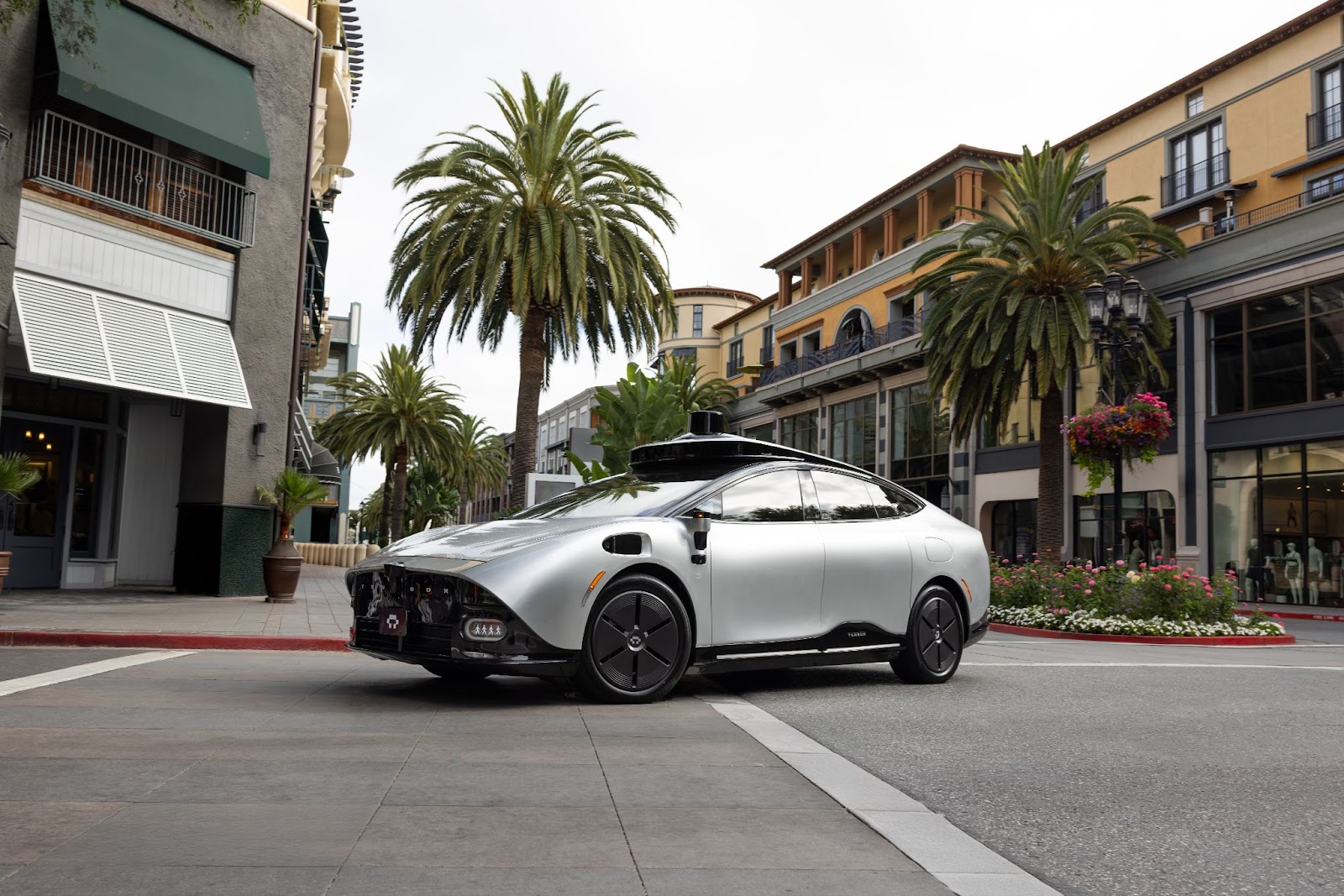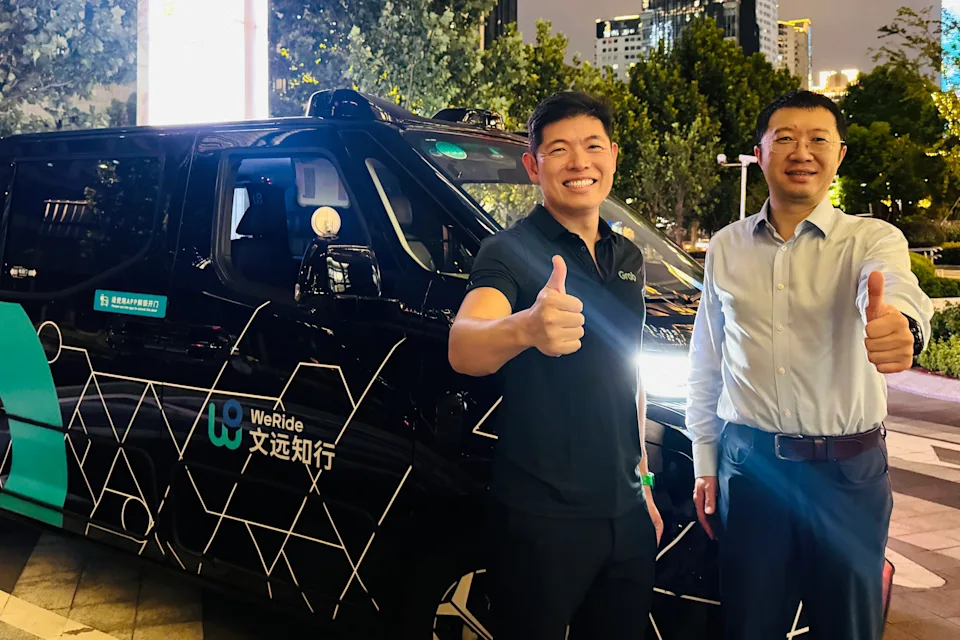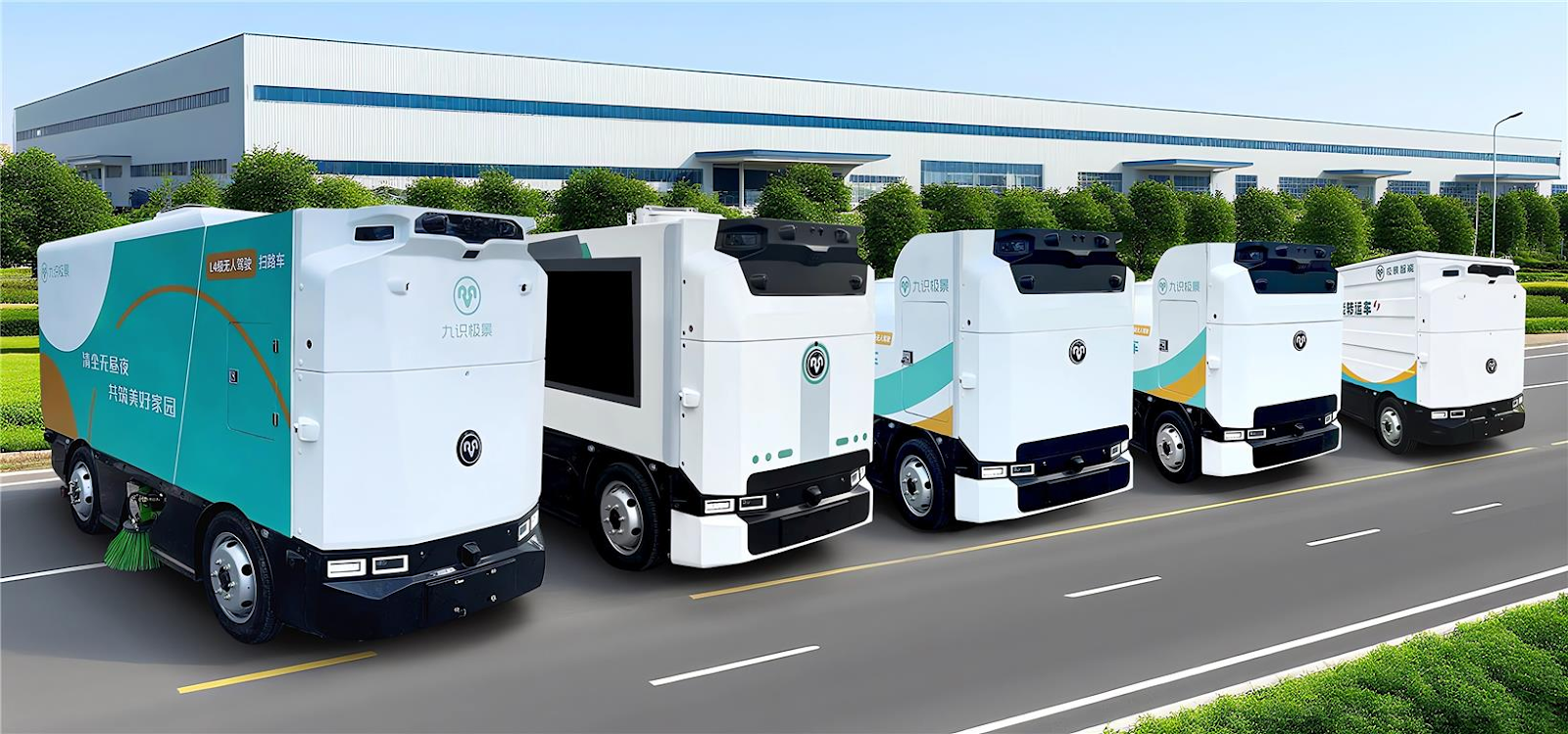
Welcome to the Ride AI newsletter: your weekly digest of news and intelligence at the intersection of technology and transportation.
Are you an AV industry insider, academic, or work in media? How do you think the robotaxi industry is doing? Where do you think autonomy will be in the next 10 years? Ride AI has partnered with McKinsey for a webinar series, and we want to hear your thoughts! Take our survey below and get a 25% discount for the 2026 Ride AI conference. It takes less than 10 minutes, and results will be shared with all participants.

PC: Tensor
The company, calling itself Tensor and describing itself as a "leading AI agentic company" based in San Jose, launched this week with bold claims about bringing the "first volume-produced, consumer-ready autonomous vehicle" designed specifically for private ownership. But here's where things get interesting: according to trademark filings from last April, Tensor appears to be affiliated with AutoX, the autonomous vehicle developer with operations in both the US and China.
The company makes no mention of AutoX or China in its announcement, instead claiming offices in Barcelona, Singapore, and Dubai. It's likely that AutoX spun off its US-based team as Tensor to navigate government restrictions on Chinese software in vehicles. When asked about the AutoX connection, a Tensor spokesperson initially didn't respond, but later confirmed that AutoX "evolved into the Tensor brand" and that all AutoX operations in China have been divested and shut down.
Tensor's robocar comes loaded with an impressive sensor array: 37 cameras, 5 lidars, 11 radars, 22 microphones, 10 ultrasonic sensors, and more. The company says it will launch in the US, Europe, and the Middle East starting in 2026. Chief Marketing Officer Amy Luca positioned the vehicle as "an embodied personal agent that moves you," seemingly in an attempt to ride the AI hype wave by using terminology typically associated with buzzy AI companies of today.
Several companies have promised privately owned autonomous vehicles, but none have delivered. Tesla keeps promising "unsupervised" Full Self-Driving is just around the corner, while GM has also just recently said it will eventually sell fully driverless cars to customers. But significant cost and liability concerns remain before any company can actually make this leap.
PC: Tesla
The positions, based in Flushing, Queens, offer up to $30.60 an hour for "prototype vehicle operators" who will collect audio and video data to test and train the company's Autopilot software. Tesla is taking these early steps just weeks after Waymo announced its own plans to test autonomous vehicles in NYC.
However, Tesla faces a longer road than its competitor. The company hasn't applied to test autonomous vehicles in the city, according to a Transportation Department spokesman. New York's permitting process, opened last year, requires companies to have a safety driver behind the wheel.
Tesla is hiring for similar data-collection roles in California, Texas, and Florida as it works to expand its robotaxi service launched in Austin this June. CEO Elon Musk said the Austin service, currently invite-only, will open to the general public in September. The company also started an invite-only ride-hailing app in the Bay Area in July, though that service uses human drivers because Tesla isn't yet licensed to operate autonomous vehicles there.
"I think we'll probably have autonomous ride-hailing in probably half of the population of the U.S. by the end of the year," Musk told investors last month. Despite this optimism, Tesla still hasn't applied for permits to test or operate robotaxis in California, though it has applied in Arizona for the Phoenix area.

PC: WeRide
The Southeast Asian superapp has committed to a strategic equity investment as part of a partnership to accelerate deployment of Level 4 robotaxis and shuttles across the region. The investment, expected to close in the first half of 2026, supports WeRide's ambitious vision to deploy thousands of robotaxis throughout Southeast Asia.
The partnership goes beyond just capital. WeRide will integrate its autonomous driving technology into Grab's fleet management, vehicle matching, and routing ecosystem. The companies will work together on optimizing dispatch and routing, maximizing vehicle uptime, measuring safety performance, and establishing remote monitoring and teleoperations protocols. In an interesting twist and perhaps critical for keeping Grab’s existing driver base happy, they'll also train and transition interested Grab driver-partners into high-value career pathways within the AV industry.
This expanded partnership builds on a Memorandum of Understanding signed in March 2025, where the companies committed to exploring the technical feasibility, commercial viability, and job creation potential of AVs in the region. The companies will extensively test WeRide's vehicles across diverse Southeast Asian environments to adapt the technology for the region's unique traffic conditions.

PC: Jijing
The company announced that its Level 4 autonomous sanitation vehicles are now available for nationwide sale in China, with production orders already scheduled through Q4 2025. Jijing Intelligent Technology, a joint venture between autonomous driving firm Zelos Tech and smart equipment manufacturer Hubei Guorui Intelligent Equipment, is based in Wuhan and focuses on specialized commercial vehicle applications.
At Jijing's Wuhan production facility, Level 4 autonomous sanitation vehicles undergo final testing at about 20 km/h, automatically slowing and steering to avoid pedestrians within five meters. Each unit must complete over 100 kilometers of integrated road testing before delivery, covering traffic signal recognition, braking reliability, and chassis stability on rough terrain.
Driverless utility vehicles such as these have already been traversing Chinese roads for some time. When I tried WeRide’s autonomous passenger offerings earlier this year, I also saw their autonomous street cleaning vehicles in action. In addition, Rhino and other companies already have autonomous package vans on the streets.
Artisanal questions asked by you, the reader. Got a question? Email me or leave it down below!
Q: What are "HD maps" and why do AVs need them?
A: HD maps are basically high resolution maps of an environment created using an AV’s sensor suite that then gets processed and used for ground truth evaluation or AV training. Think of it as looking at a street in Google Maps Streetview and learning about how it looks and what’s there before you actually go to that street in real life. The stores, colors, or objects on that street might be a bit different from what you saw, but you already generally know what to expect.
Alright, that’s it from me… until next week. If you enjoy this newsletter, share it with your friend, colleague, or boss. Thank you for reading; Sophia out!
Get all the latest news in AI x Mobility across the globe.
Continue reading more about the world of robotics, automation, and AI